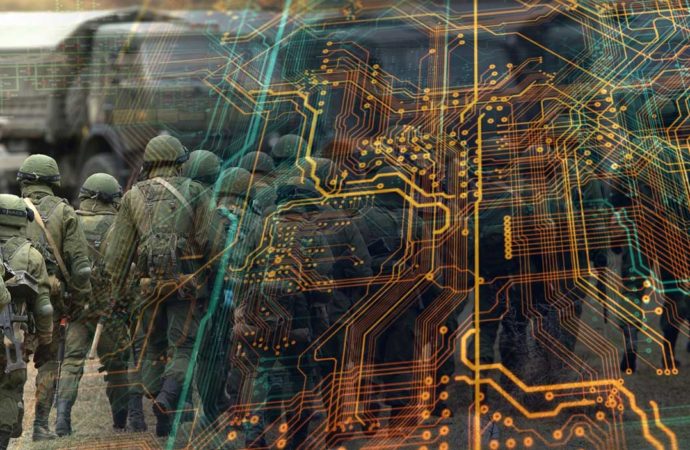Hybrid Warfare and NATO
Richard D. Hooker, Jr.

As NATO contemplates a new Strategic Concept, hybrid warfare will assume an important role in Alliance thinking and planning. Though not new, this form of confrontation is both dangerous and effective, undermining Alliance unity and cohesion and eroding the very basis of collective security. Meeting this challenge requires both a shared understanding of its nature, and the political will to address and counter its many different manifestations.
Though the definitions applied to hybrid warfare differ slightly, in general the term refers to conflict in the information domain, below the kinetic level. Subversion, propaganda, deception operations, disinformation and offensive cyber operations are its hallmarks. Penetration of Alliance intelligence services, suborning government officials, financing nationalist political parties and covert interference in democratic elections are common manifestations. Cyber-attacks that affect targeted economies and national media – particularly social media platforms – can be especially damaging. Though non-state actors such as ISIS may employ hybrid approaches, the most dangerous threats emanate from powerful state sponsors. Above all, the Russian Federation fields the most capable set of tools and organizations operating against NATO members in this domain.
Hybrid approaches employed by Russia have deep roots in the Soviet and even Czarist eras and can be applied seamlessly with the more formal military, economic and diplomatic instruments of power. Russia benefits from a centralized, top down system of political organization that is more coherent and less bureaucratic than western democracies. A lack of transparency and the deliberate use of surrogates, such as unmarked paramilitaries, private security contractors, ethnic Russian parties in foreign countries and internet trolls, give an opaque aspect to what is clearly state-sponsored and state-directed activity. The purpose is to sow doubt and distrust in targeted capitals and societies and to disrupt and degrade their political communities. In this way, Russia shapes the security landscape in its favour and in consonance with its long-term objectives.
In recent years, the Alliance has taken note of the growing threat of hybrid warfare and moved to address it. NATO’s strategy for countering hybrid warfare appropriately recognizes that member states are the first and best line of defence. NATO doctrine and staff expertise, Counter-Hybrid Support Teams and Centers of Excellence for Cyber Defense and Strategic Communications help to build resilience into the Alliance. Many allies have reorganized their government structures to cope with cyber intrusions and attacks more effectively. There is growing awareness of the nature of the threat and its potency. These first steps are important and meaningful, but much remains to be done.
An inherent difficulty is that many of the institutions that once combated Soviet disinformation were eliminated at the end of the Cold War. The U.S. Information Agency, for example, played a critical and successful role, contributing decisively to the outcome. For some years following its disestablishment, the U.S. government neglected the information domain. Today, almost two dozen separate functions related to countering adversary disinformation and hybrid warfare are distributed among scores of government offices. The lack of a unified and well-coordinated mechanism tying these functions together is a serious problem. Many allies suffer from similar disabilities.
In other cases, the openness and transparency of democratic institutions – the very strength of the Alliance – can inhibit effective responses. For example, covert intelligence activities will often be required to combat hybrid warfare, while specific capabilities such as offensive cyber must remain highly classified to be effective. Here, Allies must strike the right balance between national security and civil liberties, preserving core values while retaining the ability to compete against a resourceful and capable adversary.
To improve performance in countering hybrid threats, Allies can and should consider discrete steps focused on the threat. Strong cyber defence, national legislation that prohibits foreign funding of political parties, well-integrated interagency cooperation, funding for counter-hybrid activities, public information campaigns and anti-corruption programs are all component parts of an overall counter-hybrid strategy. Public diplomacy and strategic communication in capitals and at NATO headquarters should be synchronized and coordinated.
NATO has already taken the first and most important step. Awareness of the challenge, its nature and the threat it poses to Alliance unity and cohesion, is well advanced. NATO also competes from a position of strength: its democratic institutions, respect for individual rights and liberties, and opportunities for economic success and social mobility undergird and support a winning narrative no adversary can match. Building on these strengths, NATO is well postured to compete and prevail.

Richard D. Hooker, Jr.
Former Colonel of the US Army, Dr Hooker joined the National War College in 2018 after previous service as National Defense University’s Director, Institute for National Strategic Studies (INSS). He previously served as Assistant Professor at West Point, as the Army Chair at the National War College and as Dean of the NATO Defense College in Rome.






